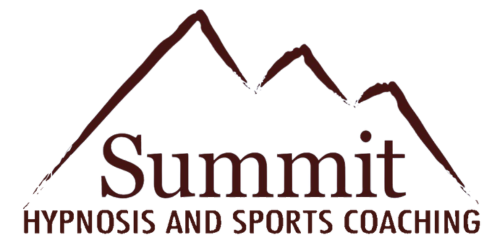[et_pb_section bb_built=”1″][et_pb_row][et_pb_column type=”1_3″][et_pb_image _builder_version=”3.15″ src=”https://summithypnosisandwellness.com/wp-content/uploads/2019/07/Developing-Mental-Toughness-Riding-Instructor-Cover.png” /][/et_pb_column][et_pb_column type=”1_3″][et_pb_image _builder_version=”3.15″ src=”https://summithypnosisandwellness.com/wp-content/uploads/2019/07/Developing-Mental-Toughness-Riding-Instructor-Article.png” /][/et_pb_column][et_pb_column type=”1_3″][et_pb_image _builder_version=”3.15″ src=”https://summithypnosisandwellness.com/wp-content/uploads/2019/07/Developing-Mental-Toughness-Riding-Instructor-Laura-King.png” /][/et_pb_column][/et_pb_row][et_pb_row][et_pb_column type=”4_4″][et_pb_text _builder_version=”3.15″]
by Laura King, CHt, Performance Coach
Horses and humans. The relationship goes back a long way, but horses were not created just for humans to ride. They willingly work with us, but we also were not created to ride horses. So it is a cooperative effort that requires both rider and horse to work together toward a successful outcome. A successful trainer understands that their students’ cues to the horse can either create a smooth and easy experience or an adversarial one!
Learning how to cue the horse without over-cueing with exaggerated or reactionary actions is so important. Horses can be cranky, and even show signs of subtle disrespect if they feel they are being “yelled” at by over-cueing. The rider’s posture, how relaxed (or tense) they are, and even what they are thinking can affect the rider, and ergo the horse’s performance.
Horses are generally very smart and quick to learn. Teaching your students how to properly execute the cues their horse was trained to is vital. Learning to take cues from the horse, to in essence “read” the horse by looking for subtle changes, is equally as important. When the relationship between rider and horse is adversarial, your job as a trainer gets much harder. You work hard to create a trusting relationship between horse and rider, where the rider is the leader and understands how to ask their horse to perform without pushing him around.
Even with the best riders, however, “life” can creep into the ring. When this happens, the rider’s mind is focused elsewhere. Thoughts create reactions – physical changes – and this affects the non-verbal communication between horse and rider, often costing points and even ribbons; or just creating a really bad day in the training ring. Stress creates tension and stiffness, anger makes for more aggressive motions, and so on.
When life happens – divorce, getting a traffic ticket, accidents, getting sick, death of a loved one, failing a test, or performing poorly in a competition – the trainer’s job is to get that riders mind back in the game. Life happenings are all neutral until we label them. Only when we label those happenings positive or negative do they take on a life of their own. Thankfully, we all have the innate ability to choose how we look at any given set of circumstances or events. In NLP, we refer to “reframing” as that shifting of our perspective. When you shift your perspective, changing your approach, most likely the outcome will change as well.
It takes a level of mental toughness to set aside what is happening “back in the real world” and focus only on the task at hand. There are a number of ways to help your students develop the mental toughness necessary to stay focused every time they step into the ring. First is the “Cancel” technique to stop negative thoughts. The mental command of “Cancel” instructs the mind to stop that thought, opening the door to a new thought. The mind can only hold one thought at a time, so I instruct my clients to find something positive to think about; and if they have trouble with that, simply think of a purple elephant. The purple elephant is a mythical creature that the mind doesn’t know what to do with, and it perfectly serves the purpose of shifting ones thoughts.
Another is an NLP technique called Anchoring that creates a response through use of association. It is based on classical behavioral conditioning and involves creating a trigger that is connects to a desired response. I have found that anchoring is the tool that creates the most powerful and lasting changes in my clients. This type of conditioning completely bypasses the conscious mind and creates an instant reaction. The conscious mind can’t stop the reaction you’ve programmed. Anchors can be just about anything: a touch, a sight, a set of complex movements. The key is that the anchor is attached to a desired emotional response. For example, “when you take the reins, you immediately relax.” Anchoring automatically brings the rider to a better state of mind – a state of mind that allows for proper cueing of their horse, which in turn creates a winning performance.
Here’s what you can teach your students to do to create an anchor. First, have them figure out what they want their anchor to be. For instance, reins or saddle. Whatever they choose to use as their anchor, make sure that it is simple to use and uncomplicated to access. Then, while they are lying in bed at night, relaxing and breathing deeply, let them simply say to themselves, “The moment I touch the horn of my saddle (or reins, etc.), I feel instantly relaxed and focused.” This is a form of self-hypnosis that works very well.
It is important that the affirmation is personal to your student, and to their specific situation. Have them write it out, so you can be sure to eliminate any negative self-talk and clearly state the outcome they want as if it has already occurred – not that they “hope” or “wish” or “try” to do it. Once this is clearly written out, have them do this exercise twenty-one days in a row; and to compound the effect, have them tape it inside of the trunk of the car, or some other place they see regularly.
Once they do this for the full twenty-one days, the programming will bypass the conscious mind and allow your student to leave life events outside the ring. Add this tool to your training toolbox, so you an always help your students be their best.
[/et_pb_text][/et_pb_column][/et_pb_row][/et_pb_section]
